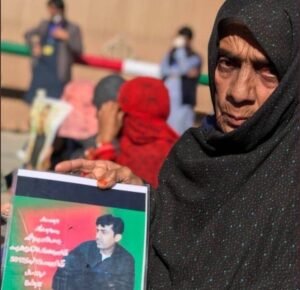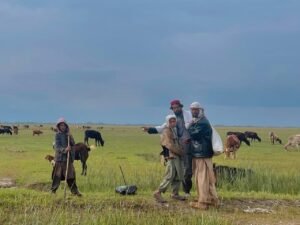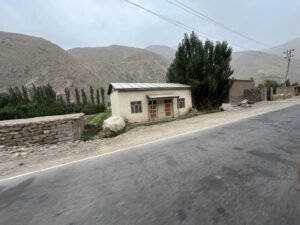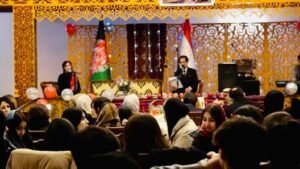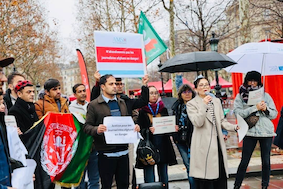Pakistan’s Economic Decline: The Cost of Corruption, Military Control, and Lack of Vision

Photo by @SS Ahmad for ADN
By Nasir Khattak
Pakistan finds itself mired in economic distress despite decades of international support. From repeated IMF bailouts to financial aid from allied nations, the country has continuously sought external assistance, yet its economic situation remains dire. While economic mismanagement has long been a challenge, the primary culprits behind the nation’s deteriorating financial health are a lack of long-term vision, entrenched corruption, and the extensive control of the Pakistan Army over economic affairs.
Pakistan’s economic policies have failed to create sustainable growth. While many developing countries have successfully implemented reforms to boost their industrial output and exports, Pakistan remains heavily reliant on a consumption-driven economic model. Final consumption expenditure accounted for an overwhelming 93.96% of GDP in 2022-23, compared to 71% in India and 75% in Bangladesh. Instead of focusing on industrial expansion and foreign direct investment (FDI), the government has prioritized short-term fiscal fixes that do little to address underlying economic weaknesses.
Despite multiple tax reform initiatives, Pakistan’s tax-to-GDP ratio remains alarmingly low at 12.5%, well below the 20-22% potential estimated by economists. The taxation structure disproportionately targets the already compliant formal sector while failing to bring the massive informal economy into the net. This has discouraged business expansion, reduced tax collection, and widened the gap between documented and undocumented enterprises.
Corruption within tax authorities further exacerbates the issue. The Federal Board of Revenue (FBR) has long been accused of facilitating tax evasion for influential entities while burdening compliant businesses with excessive taxation. This cycle has created a perverse incentive structure where firms find it more beneficial to operate informally rather than contribute to state revenues.
A stark example is the tobacco industry. Despite the introduction of a Track and Trace System (TTS) to improve tax compliance, illicit cigarette brands now control 56% of the market, leading to an annual revenue loss of Rs300 billion ($1 billion). This trend is repeated across multiple industries, including textiles, beverages, and fast-moving consumer goods, where smuggling and tax evasion deprive the government of much-needed revenue.
One of the most significant obstacles to Pakistan’s economic progress is the military’s deep involvement in financial and commercial affairs. The Pakistan Army has entrenched itself in key economic sectors, from real estate and energy to agriculture and manufacturing. Its vast network of businesses operates with preferential treatment, distorting market competition and discouraging private sector growth.
The military’s influence extends beyond business enterprises. Major economic policies, including foreign loan negotiations, development projects, and fiscal management, are often shaped by military leadership rather than elected representatives. This overreach has created an opaque economic governance system, where strategic economic decisions serve institutional interests rather than national prosperity.
Decades ago, Pakistan had the highest GDP per capita in South Asia. However, the country has since fallen behind its neighbors. In 2023, the average Pakistani earned $1,664 annually, while the average Indian earned $2,240 and the average Bangladeshi $2,688. This reversal is indicative of Pakistan’s sluggish economic growth, which has consistently underperformed compared to regional peers.
While India and Bangladesh have actively pursued export-led growth strategies, Pakistan’s export share has plummeted from 17.2% of GDP in 1990 to just 10.4% in 2023. Industrial stagnation, energy shortages, and inconsistent policies have eroded the country’s global competitiveness. Foreign investors remain wary due to unpredictable regulations, bureaucratic hurdles, and political instability.
Pakistan has repeatedly sought economic stabilization at the cost of growth. Whenever GDP growth surpasses 5%, concerns over an “overheating” economy prompt restrictive fiscal policies, curtailing expansion. This approach has hindered job creation, reduced household incomes, and perpetuated a cycle of economic stagnation.
To sustain employment levels and accommodate the three million new entrants into the workforce annually, Pakistan requires a minimum growth rate of 7%. However, the country has struggled to achieve even half that consistently. Without meaningful structural reforms, the nation will remain trapped in low growth, high inflation, and recurring financial crises.
Nasir Khattak specializes in the China-Pakistan region, with a particular focus on the economic relations between the two countries.
Note: The contents of the article are of sole responsibility of the author. Afghan Diaspora Network will not be responsible for any inaccurate or incorrect statement in the articles.

